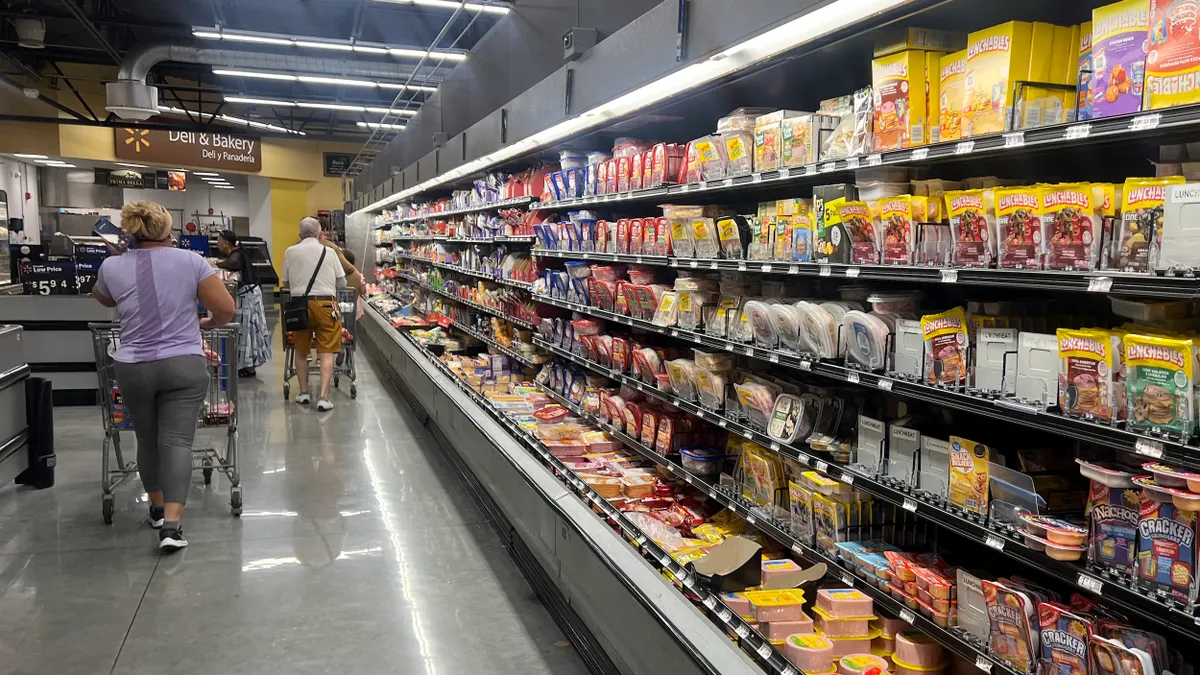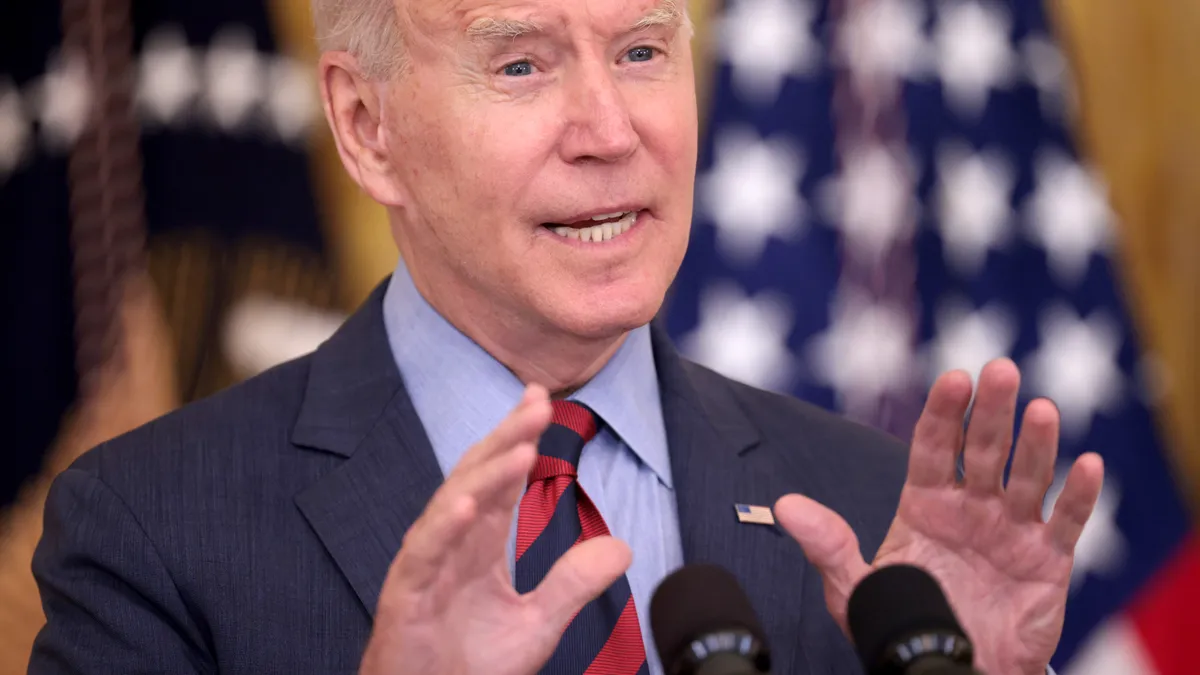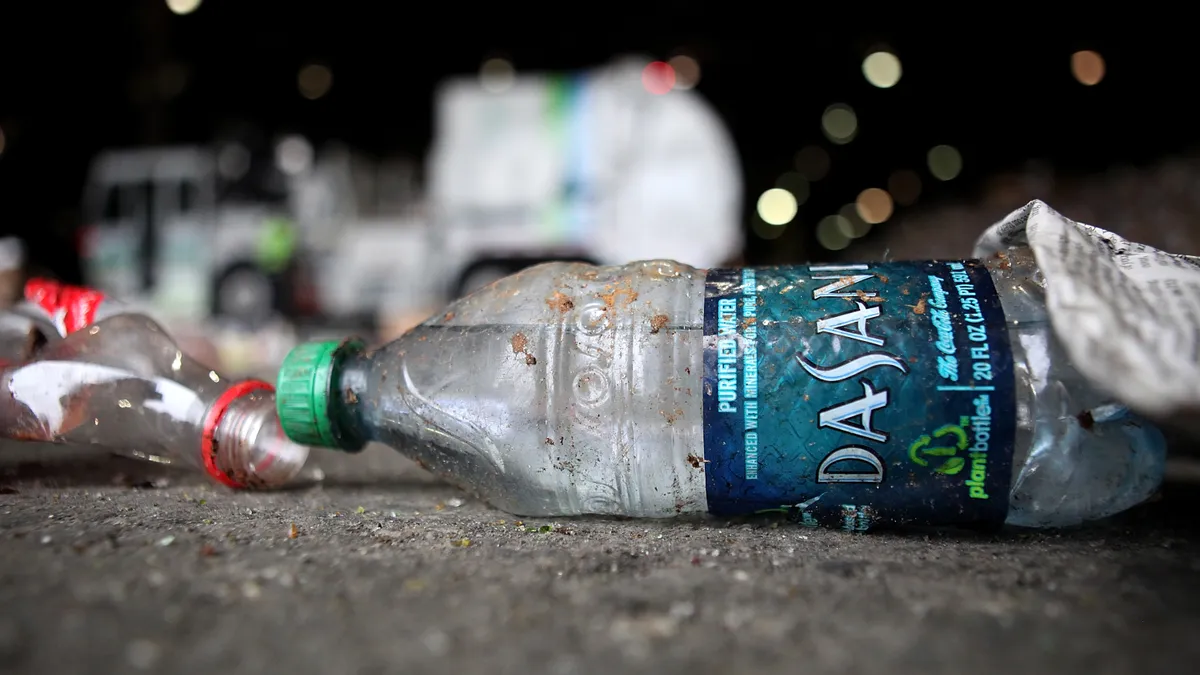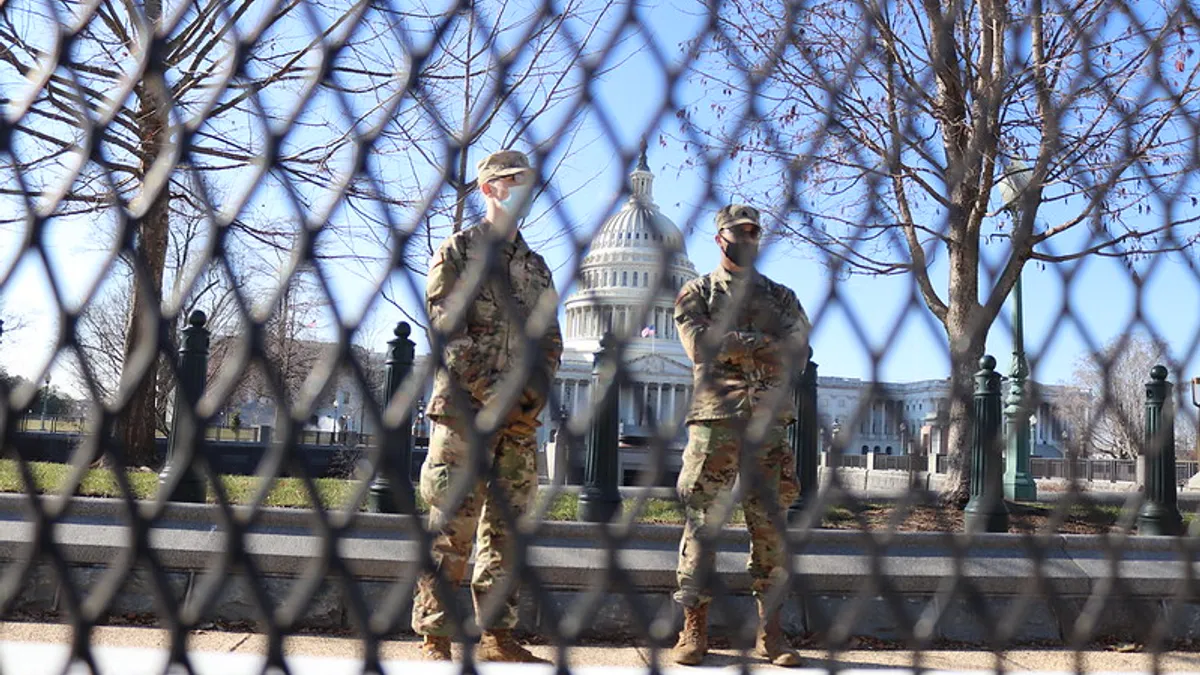The Solid Waste Association of North America is no rookie when it comes to organizing a grand event. On Monday, SWANA kicked off its 53rd annual WASTECON conference at the Gaylord Palms Resort & Convention Center in Orlando, where solid waste industry professionals congregated to discuss hot topics, demonstrate innovations, and swap industry insight.
"As industry leaders, we must continue to adapt to new conditions and challenges while incorporating new practices and technologies into our ongoing efforts," said SWANA President Michelle Leonard in a statement. That's why the 2015 WASTECON theme is "inventing the future of solid waste management." With features such as a student design competition, a Young Professionals program for individuals 35 and younger, and safety summits, this year's conference has a focus on sustaining the future of the waste and recycling industry.
The kick-off energy was pulsing through the convention center on Monday, and Waste Dive was there to capture the excitement. Here are the highlights from WASTECON day one (but don't worry — we'll be here until Thursday, so there's more to come).
Students tackle landfill challenges
For the first time, WASTECON hosted a National Solid Waste Design Competition, allowing teams of college students from across the nation to offer solutions to a "real world" problem facing the solid waste industry.
The four schools to reach Monday's finals round — Florida Atlantic University, University of Miami, Massachusetts Institute of Technology, and University of Florida — went head-to-head, presenting unique solutions to one common challenge: the need to remove hydrogen sulfide from landfill gas at a Class I landfill in simulated Hottenhumid County, FL.
Each group submitted a report, designed a poster, and presented a PowerPoint outlining its method for combating the issue. However, the six competition judges could only crown one team as the winner. The Massacusetts Institute of Technology team — consisting of MIT Waste Alliance members Kevin Kung, Rajesh Sridhar and Heather Yang — accepted the first place prize of $2,000. Florida Atlantic University came in close second, receiving a prize of $1,000.
.@MIT Waste Alliance students win the first-annual #WASTECON Student Design Competition and $2,000! pic.twitter.com/phj8vtJJQX
— Kristin Musulin (@kristinmusulin) August 25, 2015
Ignite WASTECON promotes technology, sustainability
After a day of traveling and settling in, the festivities truly began at Ignite WASTECON, a series of five-minute talks where presenters had to "enlighten us, but make it quick" in 20 slides that auto-advance every 15 seconds. Christy Hurlburt, the western regional sales manager for Enevo, was the first presenter with her seminar titled, "What the he$%k is big data and why should we care?"
Hurlburt explained that understanding "the 5 Vs" of big data — volume, variety, velocity, value, and veracity — can be instrumental in saving a company money. "We can have smarter cities and smarter organizations," Hurlburt explained. She referenced Enevo's technology surrounding the company's "smart" trash cans, which use big data to be more efficient and communicative with haulers, allowing the company to their reduce costs for servicing the cans.
"Recycling markets have been a huge topic this year," Hurlburt said as an example. "If you look at material value, it equals commodity prices minus our costs. We don’t have a lot of influence over the commodity prices that are declining, so how about we look at reducing the costs."
Following Hurlburt was Chester Phillips, director of the University of Arizona Compost Cats. The organization of 14 passionate students "uses their power to create change in the world" by finding sustainable solutions for disposing of food scraps. After just four years, Compost Cats became a permanent program in the city.
"At first our idea wasn't really embraced by the powers that be," said Phillips. "We started with some donated trash bins and a beat up truck, we got our first grant, and two years later we had over 30 businesses — restaurants, coffee shops, florist shops, businesses like Whole Foods and Starbucks."
The program trains students to become industry professionals by teaching them machinery operation, business skills, and the importance of sustainability.
"In our industry, we too often get caught up in the day-to-day and see recycling and composting as just a business, just commodity prices and tipping fees. It still is all that," Phillips said. "But, I challenge you to begin to see what you do, like we do at Compost Cats. We turn what is cast off by society back into something essential. This is work that preserves and renews the world for all our children and everyone else who lives in it."
To wrap-up Ignite, many SWANA board members and industry representatives took the stage to promote safety programs, partnerships, and new opportunities for waste and recycling leaders.
Gettin' goofy at #WASTECON pic.twitter.com/J8lvn5Zr0p
— Kristin Musulin (@kristinmusulin) August 24, 2015
Opening reception offers laughs and...dance lessons?
Immediately following Ignite, attendees flooded the exhibit hall for food, drinks, and socializing. The hall buzzed with chatter and laughter as guests explored a variety of exhibitors and interactive activities, such as "recycling archery." There was even a opportunity to learn salsa — because, why not?
Things are on the move at #WASTECON @SWANA pic.twitter.com/6TP9uNXksi
— Erik Melis (@ErikMelis) August 24, 2015
Overall, the first day of WASTECON proved to be all about collaboration...
Opening Reception is getting ready to kick off. But FIRST, thank you to our #WASTECON sponsors! pic.twitter.com/B18ckuqgOx
— SWANA (@SWANA) August 24, 2015
...education...
.@MIT students present their proposals for hydrogen sulfide mitigation strategies for a class 1 landfill #WASTECON pic.twitter.com/ZyV8yuVaG8
— Kristin Musulin (@kristinmusulin) August 24, 2015
...and, of course, having fun.
Who says trash isn't fun? #WASTECON pic.twitter.com/4YYm4k1q5v
— Wendy Melis (@SWANAknow) August 24, 2015










